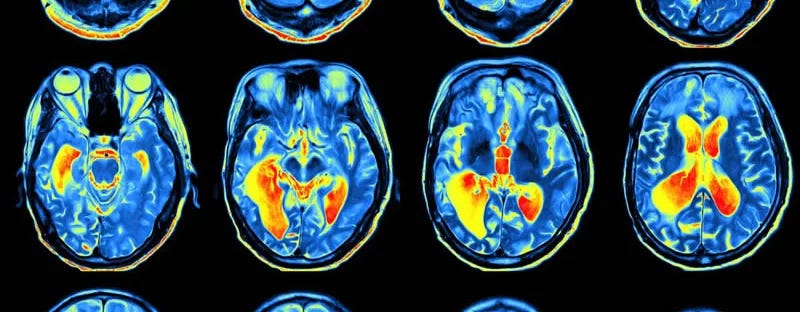For a long time, people believed that certain symptoms, characteristics or traits were hardwired into our personalities—that if we were anxious, depressed, reactive, avoidant, or insecure, we were simply "wired that way." That belief still lingers today, and for many, it becomes a quiet, heavy burden: the feeling that no matter how much effort you put in, you'll always be stuck.
But neuroscience tells a very different story.
Your brain can change.
And you can, too.
This ability to change is called neuroplasticity—a fundamental property of the brain that allows it to reshape itself in response to experience, learning, emotion, behavior, and even injury. Far from being fixed, the brain is adaptable throughout life—well into our 60s, 70s, and beyond.
In this post (and in the latest episode of Mental Health Bites - listen right here in substack, on Apple, or Spotify), I explore the science behind neuroplasticity and how we can use it to support our mental health and personal growth. Let’s begin with what drives these changes in the first place.
What Causes the Brain to Change?
Neuroplasticity is driven by what we pay attention to, repeat, practice, and emotionally engage with. It’s shaped by your habits, your thoughts, your environment—and what you choose to do with them.
When you practice a new skill or repeat a specific behavior, your brain strengthens the pathways that support that activity. If you imagine your mind as a dense forest, forming new habits is like carving a trail through the trees. The more often you walk the path, the clearer it becomes.
This is what neuroscientist Donald Hebb famously summarized as:
“Neurons that fire together, wire together.”
That includes everything from how you speak to yourself to how you respond to stress. For example, if your go-to inner dialogue is self-critical—“I never get this right”—you strengthen those pathways. But with conscious effort, you can begin to shift those patterns toward something more balanced, and over time, that becomes the new default. The result is not only psychological relief—it’s physical change in the brain.
We’ve Seen It on Brain Scans
This isn’t just theory—it’s been repeatedly demonstrated through neuroimaging.
In a landmark study at Harvard, neuroscientist Alvaro Pascual-Leone found that participants who mentally rehearsed a five-finger piano exercise for five days showed increased activity in the motor cortex—even though they never physically played the instrument. Their brains changed purely through focused attention.
Another study published in Psychiatry Research: Neuroimaging examined participants before and after an eight-week mindfulness-based stress reduction program. The results were striking: they showed increased gray matter density in the hippocampus (a region involved in learning and memory) and decreased volume in the amygdala (the area associated with fear and stress reactivity).
In other words, practicing a new way of being—whether it’s meditation, emotional regulation, or learning—can change the architecture of your brain in measurable, meaningful ways.
What This Looks Like in Everyday Life
You don’t need to be part of a neuroscience study to benefit from neuroplasticity. It shows up in the lives of real people every day. Research and clinical observation have shown that individuals who engage in intentional, brain-supporting practices often experience:
Reduced symptoms of anxiety and depression
Improved emotion regulation
Stronger, more fulfilling relationships
Enhanced cognitive flexibility and memory
Even improved immune function
These aren’t extraordinary interventions. They’re often small, consistent actions practiced over time.
This is why therapy works. Why gratitude matters. Why it’s never too late to learn something new. And why some of the most meaningful personal transformations are built not on drastic change, but on sustained, intentional effort.
How to Begin Rewiring Your Brain
Here are three simple, research-backed strategies you can start using right away to support neuroplasticity in your own life:
1. Gratitude + Emotional Reflection
Each night, take a few minutes to write down three things you’re grateful for. But go one step further—reflect on whythose things mattered and how they made you feel. This emotional encoding strengthens neural circuits related to well-being, motivation, and resilience.
2. Cognitive Reframing
This practice—drawn from Cognitive Behavioral Therapy—involves three steps:
Catch the negative or automatic thought.
Challenge its validity: What’s the evidence for and against it?
Reframe the thought into something more balanced and constructive.
For example, if you think, “I messed that up—they probably can’t stand me,” you might reframe it to, “We had a difficult moment, but we’ve worked through things before. One moment doesn’t define our relationship.”
This practice, repeated over time, begins to weaken the old reactive pathways and strengthen more adaptive ones.
3. Seek Novelty
Introduce something new into your day—no matter how small. A new walking route, a few minutes on a language app, trying a new recipe. Novel experiences help create new neural connections, particularly in the hippocampus, which supports memory and learning.
Your Brain Is Listening
The takeaway is this: neuroplasticity is not just an interesting scientific discovery—it’s a practical, empowering tool for change.
The brain is listening. It’s responding to how you move through the world.
And every small decision—to reflect, to reframe, to choose something new—is a signal. A step. A rewiring.
If you’ve felt stuck or doubted your capacity to grow, remember:
You are not fixed. Your brain is not fixed. And neither is your future.
P.S. This post aligns with my 50th episode of Mental Health Bites. Thank you for being part of this journey. Your engagement, curiosity, and trust mean the world. Here’s to the next 50 episodes—and to many more small, powerful shifts ahead.
Please share this newsletter with someone who you think might benefit.
Here’s to Your Health,
Dr. Judy
Order The New Rules of Attachment here: https://bit.ly/3MvuvvF
Take my attachment styles quiz
About me:
Dr. Judy Ho, Ph. D., ABPP, ABPdN is a triple board certified and licensed Clinical and Forensic Neuropsychologist, a tenured Associate Professor at Pepperdine University, television and podcast host, and author of Stop Self-Sabotage. An avid researcher and a two-time recipient of the National Institute of Mental Health Services Research Award, Dr. Judy maintains a private practice where she specializes in comprehensive neuropsychological evaluations and expert witness work. She is often called on by the media as an expert psychologist and is also a sought after public speaker for universities, businesses, and organizations.
Dr. Judy received her bachelor's degrees in Psychology and Business Administration from UC Berkeley, and her masters and doctorate from SDSU/UCSD Joint Doctoral Program in Clinical Psychology. She completed a National Institute of Mental Health sponsored fellowship at UCLA's Semel Institute.



















Share this post